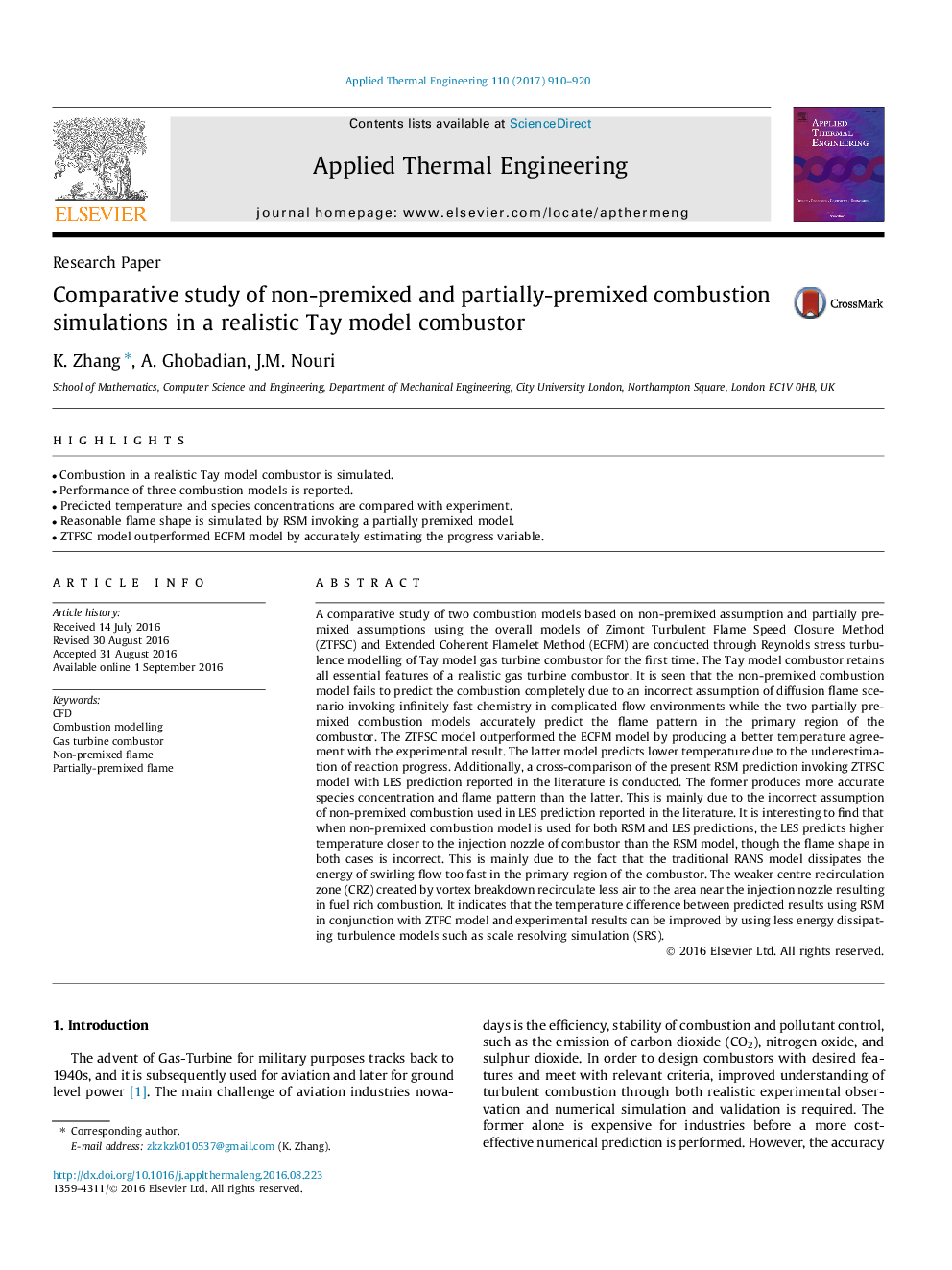| کد مقاله | کد نشریه | سال انتشار | مقاله انگلیسی | نسخه تمام متن |
|---|---|---|---|---|
| 4992074 | 1457119 | 2017 | 11 صفحه PDF | دانلود رایگان |
عنوان انگلیسی مقاله ISI
Comparative study of non-premixed and partially-premixed combustion simulations in a realistic Tay model combustor
دانلود مقاله + سفارش ترجمه
دانلود مقاله ISI انگلیسی
رایگان برای ایرانیان
کلمات کلیدی
موضوعات مرتبط
مهندسی و علوم پایه
مهندسی شیمی
جریان سیال و فرایندهای انتقال
پیش نمایش صفحه اول مقاله

چکیده انگلیسی
A comparative study of two combustion models based on non-premixed assumption and partially premixed assumptions using the overall models of Zimont Turbulent Flame Speed Closure Method (ZTFSC) and Extended Coherent Flamelet Method (ECFM) are conducted through Reynolds stress turbulence modelling of Tay model gas turbine combustor for the first time. The Tay model combustor retains all essential features of a realistic gas turbine combustor. It is seen that the non-premixed combustion model fails to predict the combustion completely due to an incorrect assumption of diffusion flame scenario invoking infinitely fast chemistry in complicated flow environments while the two partially premixed combustion models accurately predict the flame pattern in the primary region of the combustor. The ZTFSC model outperformed the ECFM model by producing a better temperature agreement with the experimental result. The latter model predicts lower temperature due to the underestimation of reaction progress. Additionally, a cross-comparison of the present RSM prediction invoking ZTFSC model with LES prediction reported in the literature is conducted. The former produces more accurate species concentration and flame pattern than the latter. This is mainly due to the incorrect assumption of non-premixed combustion used in LES prediction reported in the literature. It is interesting to find that when non-premixed combustion model is used for both RSM and LES predictions, the LES predicts higher temperature closer to the injection nozzle of combustor than the RSM model, though the flame shape in both cases is incorrect. This is mainly due to the fact that the traditional RANS model dissipates the energy of swirling flow too fast in the primary region of the combustor. The weaker centre recirculation zone (CRZ) created by vortex breakdown recirculate less air to the area near the injection nozzle resulting in fuel rich combustion. It indicates that the temperature difference between predicted results using RSM in conjunction with ZTFC model and experimental results can be improved by using less energy dissipating turbulence models such as scale resolving simulation (SRS).
ناشر
Database: Elsevier - ScienceDirect (ساینس دایرکت)
Journal: Applied Thermal Engineering - Volume 110, 5 January 2017, Pages 910-920
Journal: Applied Thermal Engineering - Volume 110, 5 January 2017, Pages 910-920
نویسندگان
K. Zhang, A. Ghobadian, J.M. Nouri,